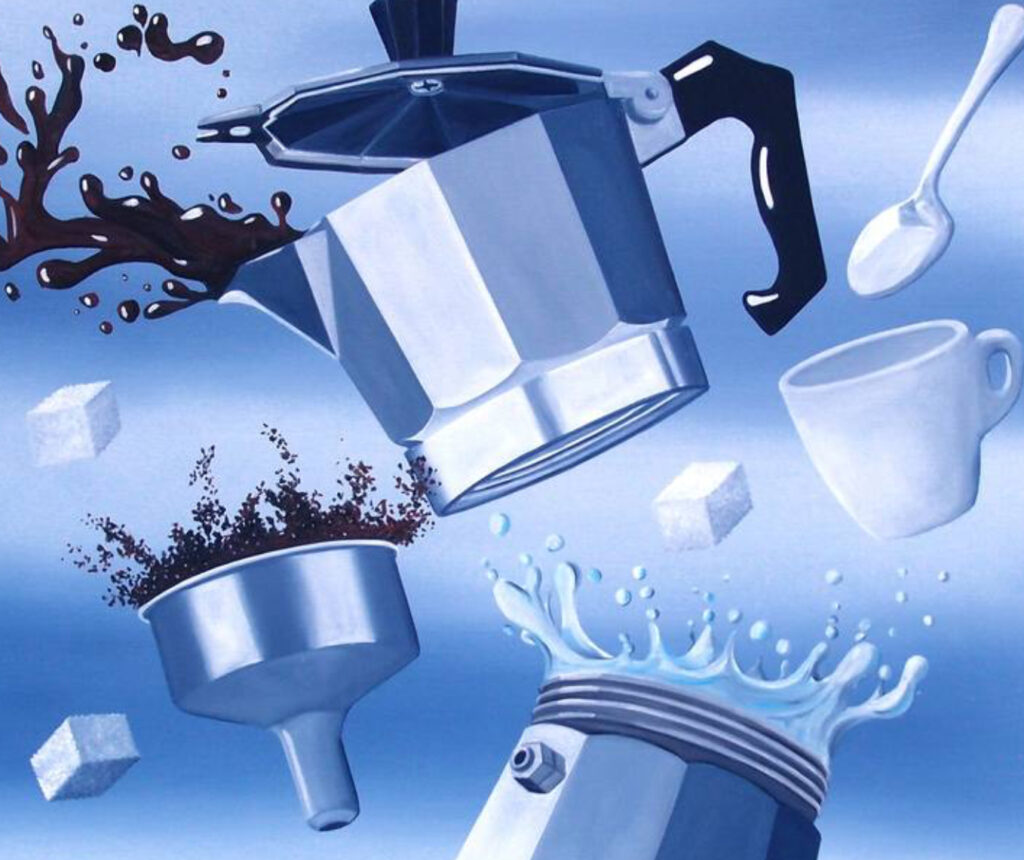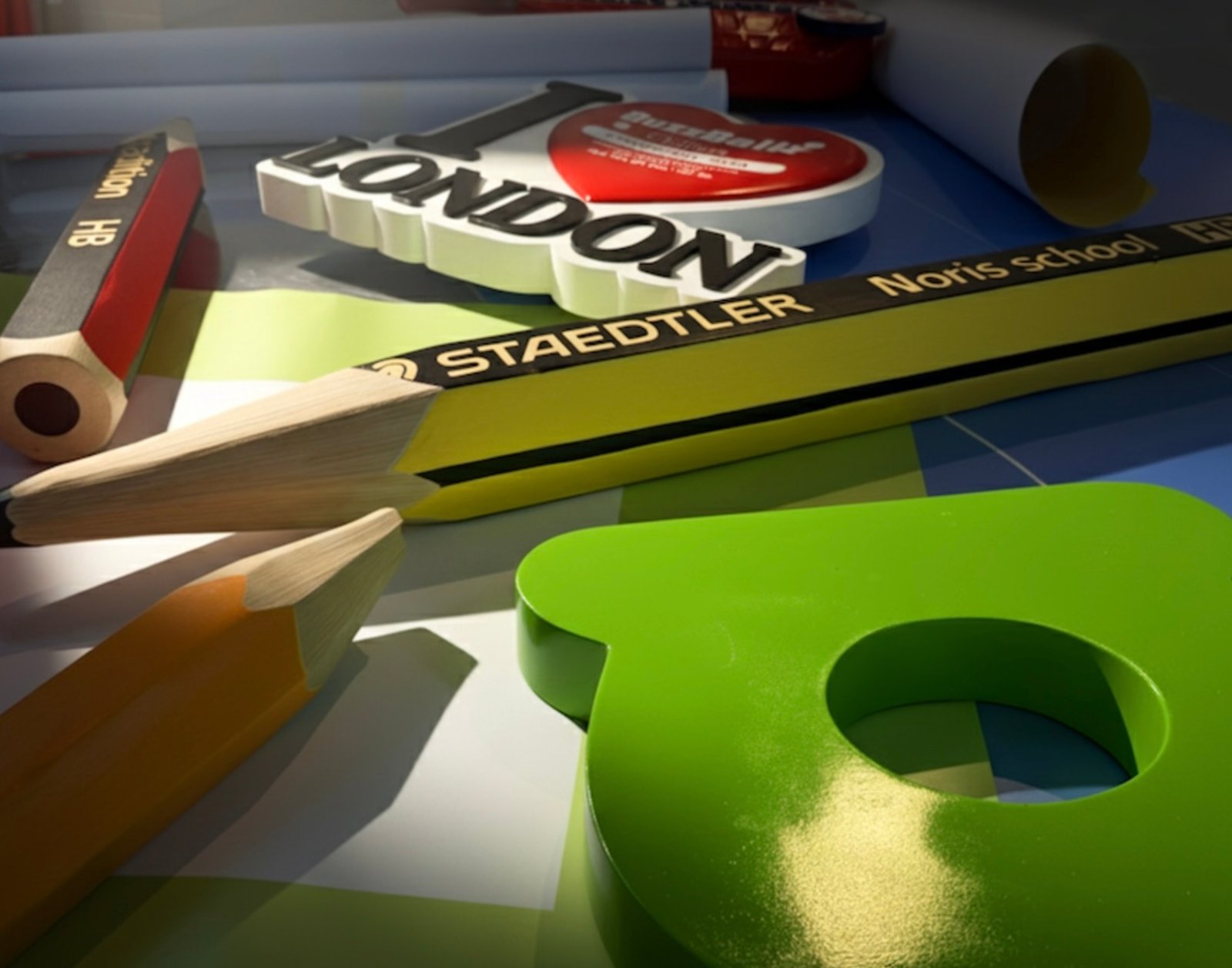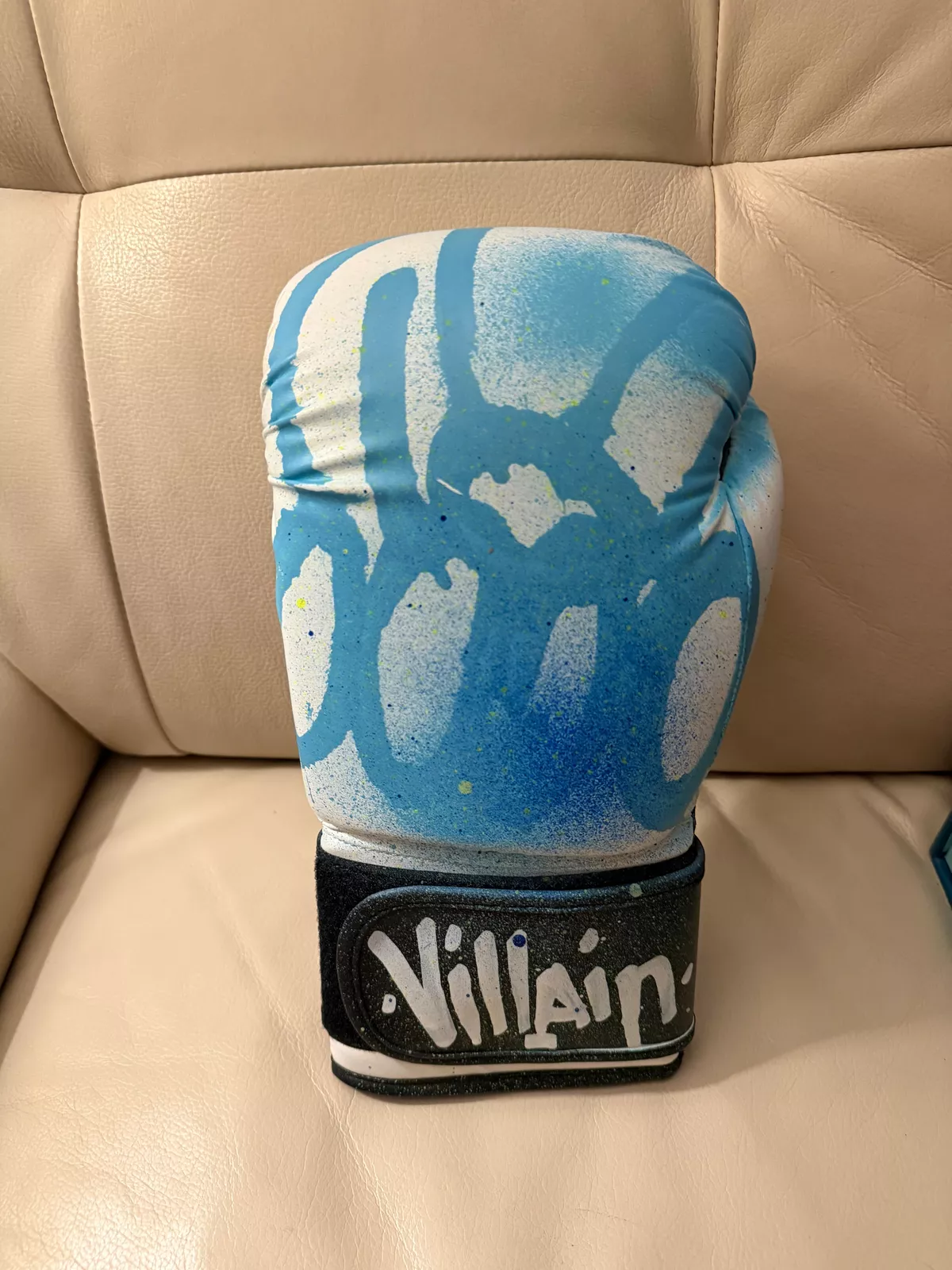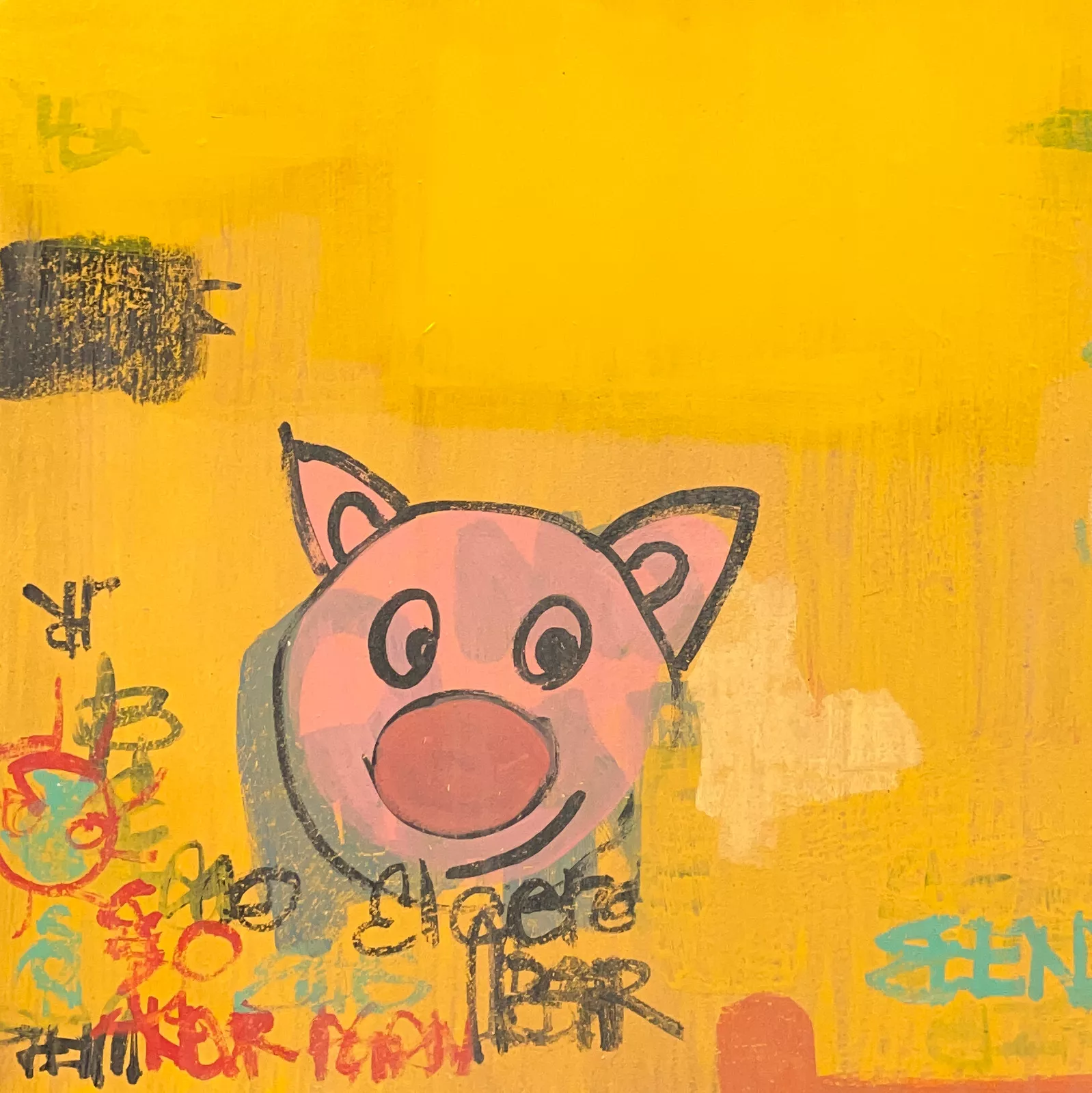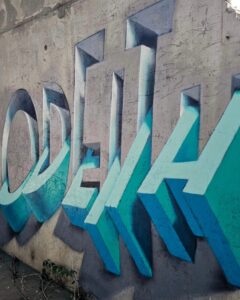In the hands of Italian painter Trevisan Carlo, coffee becomes more than ritual—it becomes art.
In a country where espresso is treated with the reverence of a holy sacrament, it’s fitting that an Italian artist would find a way to transform coffee into more than just a beverage. For Trevisan Carlo, a painter from Italy, coffee has become a medium as expressive, textured, and deeply cultural as oil or charcoal. In his captivating work titled simply “Italian Coffee Painting”, Carlo blurs the line between substance and symbol, brewing pigment from the cup and pouring it onto canvas with layered meaning and refined technique.
At first glance, Italian Coffee Painting is subtle—perhaps even minimalistic. But spend more time with it, and you begin to feel the depth behind the simplicity. There’s a tension here: between old and new, ritual and randomness, realism and abstraction. The work is not literal—it doesn’t depict steaming cups or café scenes—but instead captures the essence of Italian coffee culture. It distills the ritual, the aroma, the personal connection, and transfers it—stroke by stroke—onto canvas.
But this isn’t coffee as a gimmick. It’s coffee as medium and message.
Who Is Trevisan Carlo?
Born and based in Italy, Trevisan Carlo is part of a wave of contemporary European painters whose work resists categorization. He came up in the traditional Italian art academies, where oil painting, classical form, and rigorous technique still hold sway. But unlike some of his peers, Carlo never sought to rebel against tradition. Instead, he worked to expand its vocabulary.
His choice of medium—primarily oil on canvas—is a nod to the Renaissance masters. But his approach to subject and texture is unmistakably modern. Carlo often flirts with abstraction, layering washes and impastos, sometimes letting the natural flow of liquids guide the composition. This is especially true in Italian Coffee Painting, where the tone, texture, and temperature of coffee itself become part of the final work.
Coffee, in Carlo’s world, isn’t just brown. It’s copper, ochre, sienna, shadow. It stains, blends, and bleeds—never fully controlled, always slightly alive.
Painting with the Ritual of Coffee
In Italy, coffee is not just consumed. It’s performed. From the morning macchiato to the post-dinner espresso, every region has its customs, every generation its rituals. It’s this universality and personal connection that fuels Carlo’s fascination.
“Coffee is time,” Carlo has said in interviews. “It’s time shared, time taken, time remembered. In painting, I’m trying to give that time a shape.”
To capture this idea, Carlo doesn’t just paint with coffee. He incorporates coffee’s physical properties into the artistic process. Before beginning a canvas, he’ll brew several types of Italian roast—ranging in darkness, consistency, and intensity. He uses these as both underpainting washes and glaze-like overlays, mixing them with oils and binders to affect saturation, translucency, and texture.
The result is a surface that feels both tactile and ephemeral. In certain lights, the coffee-washed underlayers seem to glow from within, like light filtering through a demi-tasse. In others, they recede, allowing the viewer to focus on the bolder oil-work up top.
This interplay of media creates an emotional depth that transcends novelty. It’s not about painting with coffee for its own sake—it’s about evoking the feeling of coffee: rich, slow, intimate, human.
The Composition: Oil, Earth, and Aroma
In Italian Coffee Painting, Carlo’s palette is restrained but never flat. Dominated by earth tones—burnt umber, Venetian red, raw sienna—it reflects the organic qualities of its core ingredient. But Carlo doesn’t rely solely on color to tell his story.
The composition is fluid, almost rhythmic. Brushstrokes alternate between deliberate, wide swaths and fast, gestural flicks. Areas of density give way to negative space. It’s as though the painting breathes.
This breathing quality is key. Carlo wants the viewer to feel the tempo of coffee culture—how it rises and falls across a day, how it slows us down even as it energizes. There are no hard lines in this piece. Everything blurs slightly, like steam rising or conversation fading in a crowded café.
The oil elements lend body and weight to the coffee tones, grounding them, but never overshadowing them. If coffee is the spirit of the painting, oil is its architecture.
A Cultural Icon Reimagined
What makes Italian Coffee Painting more than a beautiful artwork is how it positions coffee as a cultural icon worthy of reinterpretation. In doing so, Carlo invites viewers—especially Italian viewers—to see their own rituals in a new light.
For centuries, European still life painters depicted food and drink as status symbols or moral metaphors. Carlo updates this tradition. His work is not moralistic, nor does it glorify excess. Instead, it captures something more intimate: the personal weight of everyday habits, and how they tether us to place and memory.
The painting, though abstract, feels grounded in a specifically Italian psychology. Coffee in Italy isn’t just about taste—it’s about belonging. It’s about standing at the same counter every morning, with the same barista, the same newspaper folded under your arm. It’s about repetition and routine—but also about pause, about self-reflection, about shared humanity.
Carlo takes this unspoken truth and renders it visible.
Reception and Significance in the Art World
Italian Coffee Painting has made quiet waves in both regional and international art circles. It has been exhibited in Florence, Milan, and more recently in New York and Paris, where critics praised its tactile storytelling and emotional warmth. Art journals have noted its ability to bridge fine art with cultural anthropology—an artistic documentation of modern Italian life through form and flavor.
Collectors have also taken notice. As the conversation around sustainability and sensory art continues to grow, Carlo’s choice to work with organic pigments like coffee has made him a notable voice in the eco-conscious art space—though he’s careful not to frame his work as purely environmental.
“It’s not about being green—it’s about being honest,” Carlo has said. “These are materials that are part of my life, and part of my landscape. I’m painting with what I live.”
The Future of Coffee as Medium
Carlo isn’t the only artist experimenting with coffee as pigment, but few have done it with such sophistication or conceptual clarity. His work opens the door to a broader conversation about sensory art—work that connects not just to the eyes, but to memory, smell, habit, and identity.
As interest grows in slow art, sensory minimalism, and ritual-based practices, coffee as medium may see further exploration. Carlo’s success offers a blueprint—not just for technique, but for authentic connection between material and message.
There’s also growing speculation about whether Carlo will evolve his method further—perhaps introducing other sensory elements like sound or scent into future installations. For now, he remains focused on painting, committed to deepening the relationship between process, ritual, and emotional resonance.
Impression
In Italian Coffee Painting, Trevisan Carlo reminds us that even the most familiar objects can be reframed. A cup of coffee, once consumed without thought, becomes here a symbol of time, place, and shared experience.
The painting doesn’t demand your attention—it invites it. Like a good espresso, it doesn’t shout. It lingers. And long after you’ve left the gallery, or closed the page, its warmth stays with you.
No comments yet.

